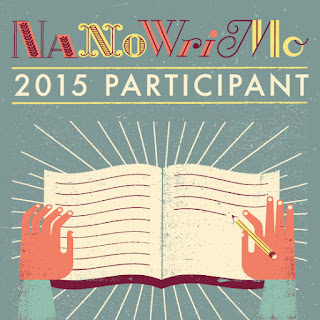Let's get to the nitty gritty, shall we? Today's weird thing is pretty crunchy, but give it a chance, I think you'll grow to appreciate it.
Weird Thing 2: An evil plan: Eliminate pausing to wonder what happens next. Whether you fly by the seat of your pants like me, or outline meticulously like my roommate, some sort of plan goes a long way toward making wordcounts easier to achieve. At the same time, you'll be torturing your characters, i.e. moving your story along.
 |
| One possibility: a sticky a day keeps the blank page away? Photo copyright copyright 2008 Jeremy Keith |
Can't have that! So I plan a few upcoming scenes each day and leave the rest until later. Every year, I wind up writing the last couple of lines in the second week of November, so I have something to write towards. Sometimes they change, and that’s okay, too.
There are tons of methods out there already, from the Snowflake Method created by Randy Ingermanson to Mary Robinette Kowal’s Yes, but No, and method. I poke at several methods every October, but my favorite continues to be: 30 days, 30 lines.
I’m not sure where it came from exactly, but it’s pretty basic - I write down a line of description for each day of November, representing the work that day’s words need to do and keeping in mind the structure of my story. It’s an evil plan because we can’t afford to be nice to our characters if we want to keep readers on the edge of their seats, scrolling or flipping pages long past bedtime.
The general, not-too-useful version looks like this:
- Introduce protagonist, setting, and burning desire; end with the inciting incident
- Protagonist’s first reactionary plan, end with failure
- Protagonist consults new character, formulates new plan. End with success that has terrible consequences & raises the stakes
Look at the lines for my first three days: (Note: these are longer than a line because they have to make sense to someone other than me. Yours can be shorter.)
- (protagonist) Marseille opens the hair salon (setting) for the day, thinks about remodeling the place (burning desire) someday when she inherits it, and goes to put a load of towels in the washer; there, discovers her grandmother’s body. (inciting incident)
- She calls 911, and tries resuscitate her grandmother but it’s too late; she begins to deal with the aftermath - an autopsy, salon inspection, and asking family members to help keep things afloat(first reactionary plan); inspector closes salon due to gas leak (failure).
- She meets her grandmother’s lawyer (new character), he suggests that since her relatives can’t help, and she herself can’t legally own a business until she turns 21, she should grant him power of attorney for the next two years (new plan); he orders salon repairs and schedules a reopening, but he brings in a greedy new manager (terrible consequences) who frames Marseille for stealing from the cash register (raising the stakes - now she has to clear her name legally AND get her salon back).
That's enough to get started with.
Do you see the process? It's not a 30 page synopsis or a scary english-teacher outline - no roman numerals in sight. The idea is to get the book rolling, introduce everything you need for story tension and reader interest, without waiting until you're staring at the blank page to figure it out.
Phew! Two down, one Weird Thing to go. While you're waiting for me to post that, have a look at this excellent article in the Huffington Post about our beloved NaNo!





